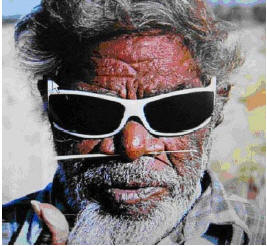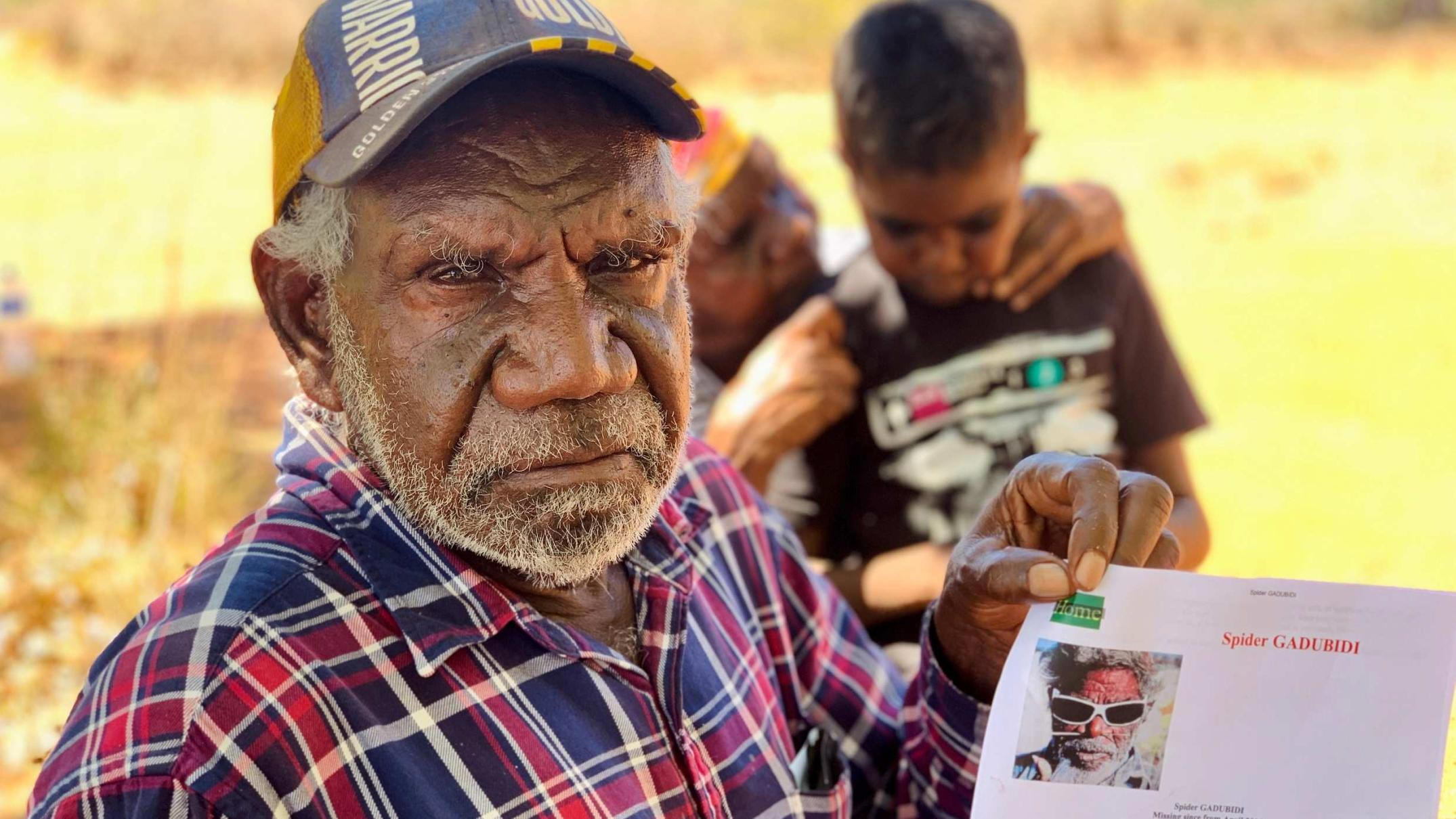 Spider GADUBIDI - TRAGICALLY LOCATED DECEASED
Spider GADUBIDI - TRAGICALLY LOCATED DECEASED
 Spider GADUBIDI - TRAGICALLY LOCATED DECEASED
Spider GADUBIDI - TRAGICALLY LOCATED DECEASED


It took world-leading forensic techniques to bring Old Man Spider home. Other families with missing loved ones hope a national DNA database can do the same.
Aboriginal and Torres Strait Islander readers are advised the following story contains images of people who have died
When Spider Kalbybidi went missing, the people searched out into the desert and along the shifting, shell-lined beaches.
It was April 2008, after a night of hot tropical storms, when the old bushman disappeared from his home in the Bidyadanga community on the northern coast of Western Australia.
His family headed out along the bush tracks that criss-cross Karajarri country, scouring the sand dunes and scrub for the lean, leather-skinned lawman.
As the weeks passed and the weather cooled, they began to believe Spider would never be found.
Merridoo Walbidi sits quietly under a tree, gazing at a photo of his late uncle.
“We began to think maybe a spirit man was hiding him away somewhere,” he says.
“How did we miss him? How were there no tracks?”
Spider was a formidable cultural man, initiated in a series of ceremonies in the Great Sandy Desert during World War II.
He was imbued with the kind of powers that do not translate well into the English language and a Western world view — the ability to move invisibly across the country, to fix maladies and communicate with spirits long gone.
A granddaughter describes waking late at night and hearing him chuckling away with spirits of old people she could not see nor hear.
One of the last photos taken before his death shows him with jutalpa, or a blade of spinifex threaded through his nose.
“That means he was a proper warrior,” Merridoo Walbidi says.
“They would take a bone and they poke ’em through the nose — slowly, slowly, slowly — and they get a warm firestick and put it in the ashes to heal it, make sure it not bleed too much.
“It’s a very special thing that you don’t see any more; most of the old people died.”
The family were bewildered by Spider’s vanishing and suspected interference from the spiritual realm.
After 11 long years came a breakthrough.
A local boy found a silvery skull tucked quietly under a tree near the road into town.
Police were called and roped off the scene; bone samples were dispatched to a forensic pathology lab.Soon it was Soon it was confirmed — the bones belonged to Spider Kalbybidi.
He had died on the edge of a sacred men’s area, which searchers had tried to avoid when trampling the bush looking for him.
“He was a kind and loving man and such a strong cultural man,” niece Madeleine Jadai says.
“I’m glad we found the Old Man. Now, we can lay him to rest.”
It is the kind of breakthrough that thousands of families across Australia are waiting for as they agonise over the disappearance of a loved one.
Each year, around 38,000 people are reported missing.
Most are found quickly — perhaps they are visiting relatives, or seeking some solitude, or on a drug-induced bender.
But at any one time, there are around 2,600 Australians who remain stubbornly unfindable, leaving in their wake trails of grief and confusion.
Less well known are the 500 sets of anonymous bones languishing in police archives across the country.
Some are small fragments found in the bush.
Others were found as recently deceased human bodies, complete with clothes, jewellery and facial expressions captured at death.
Investigators like Detective Sergeant Bruce Bowers say they can be surprisingly hard to identify.
He is doing his second stint in the WA Police detectives office in Broome and oversaw the Spider Kalbybidi identification.
“We would experience the discovery of skeletal remains three or four times a year.
“Luckily, we have a range of forensic science techniques we can rely on now to try to bring about resolution to the investigation, but more importantly for the family.”
This year, a national DNA database has been launched in the hope it will be a game-changer.
The $4 million National DNA Program for Unidentified and Missing Persons has been established at the Australian Federal Police laboratories in Canberra.
Program director Jodie Ward says it will apply world-class forensic science techniques to the backlog of unsolved cases in a methodical way.
“This will be the first time that we’re applying world-leading forensic techniques to these remains to give the best chance of identifying them,” Professor Ward says. “We are really positive that we are going to identify some of our missing people this way. “And for those families we can’t provide resolution for, at least they’ll get some comfort knowing that their loved one is not represented among the deceased that have not been tested.”
Until now, DNA sampling has been patchy and, crucially, not coordinated across the states and territories.
That means human remains found in New South Wales in the 1990s could belong to a person reported missing across in Victoria in the 1980s, with DNA samples from the bones and remaining relatives never having been compared.
State and territory police are auditing their DNA archives and collecting samples from the relatives of historical missing persons where needed.
They will be submitted to Professor Ward’s team along with DNA or bone samples from unidentified remains.
But the program will go beyond a simple DNA comparison, utilising a range of techniques to try and narrow down the age, ethnicity and history of the bones.
This includes craniofacial reconstruction to artfully recreate the appearance of a face, drawing on skull definition and DNA phenotyping to colour in the complexion.
There is also isotopic analysis, which uses a chemical signature to establish where the nameless person lived and travelled while they were alive.
“It’s very exciting, as it’s allowing us to develop new capabilities in Australia ” Professor Ward says.
“We’re positive that in the first quarter of 2021, we will be receiving and processing cases.”